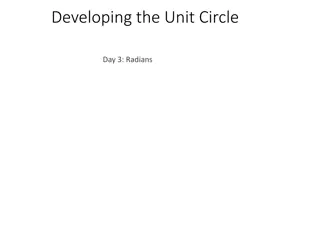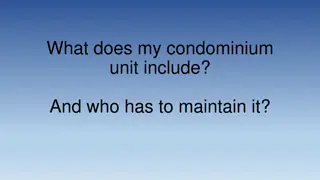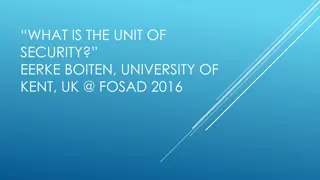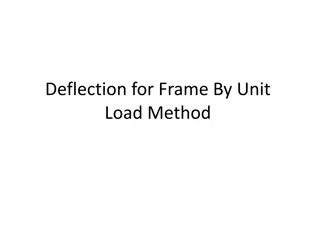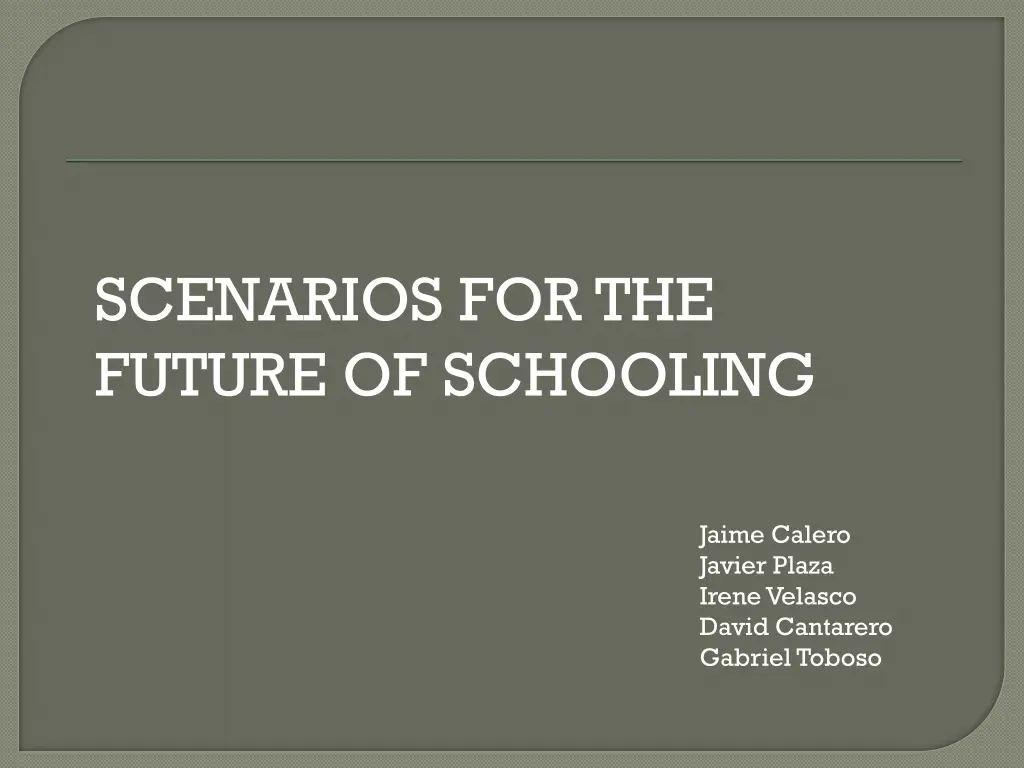
Exploring Future Scenarios in Schooling
"Discover six scenarios envisioned for the future of schooling, exploring trends, policies, and potential developments. Delve into varied models and cultural shifts shaping educational landscapes. "
Uploaded on | 0 Views
Download Presentation

Please find below an Image/Link to download the presentation.
The content on the website is provided AS IS for your information and personal use only. It may not be sold, licensed, or shared on other websites without obtaining consent from the author. If you encounter any issues during the download, it is possible that the publisher has removed the file from their server.
You are allowed to download the files provided on this website for personal or commercial use, subject to the condition that they are used lawfully. All files are the property of their respective owners.
The content on the website is provided AS IS for your information and personal use only. It may not be sold, licensed, or shared on other websites without obtaining consent from the author.
E N D
Presentation Transcript
SCENARIOS FOR THE FUTURE OF SCHOOLING Jaime Calero Javier Plaza Irene Velasco David Cantarero Gabriel Toboso
The chapter presents six scenarios constructed through the OECD/CERI programme on Schooling for Tomorrow . Their purpose is to sharpen understanding of how schooling might develop in the years to come and the potential role of policy to help shape these futures.
The OECD Schooling for Tomorrow scenarios combine different elements: - Trends - Plausible inter-relationships - Guiding policy ideas
Education, especially schooling, is politicised, and to the fore in party politics ATTITUDES Much attention focuses on the curriculum GOALS AND FUNCTIONS Dominance of the classroom/individual teacher model ORGANIZATIONS decentralisation to schools and communities, new corporate and media interests THE GEOPOLITICAL DIMENSION Highly distinct teacher corps, sometimes with civil service status. THE TEACHING FORCE
TRENDS TOWARDS MAKET-ORIENTED SCHOOLING MODELS In this scenario, these trends are extended significantly in the face of widespread dissatisfaction with the performance of relatively uniform structures of public school systems and with existing funding arrangements to provide cost-effective solutions
A political culture develops that supports extended competition across many areas of social, employment, and cultural policy. ATTITUDES Lifelong learning becomes the norm for many. Clear boundaries for staying on in school lose meaning in the face of diversified educational careers. GOALS AND FUNCTIONS ICT is much more extensively and imaginatively exploited for learning. ORGANIZATIONS Much more diverse set of stake- holders involved in educational governance. THE GEOPOLITICAL DIMENSION Less distinct teaching force, a wide range of new professionals with diverse profiles public, private; full-time, part-time. THE TEACHING FORCE
In this scenario, the school comes to enjoy widespread recognition as the most effective bulwark against social fragmentation and a crisis of values. There is a strong sense of schooling as a public good and a marked upward shift in the general status and level of support for schools. Scenario 3 describes a strengthened, creative school institution available to all communities, meeting critical social responsibilities while silencing critics. This scenario fits a longstanding tradition advocating that closer be forged between schools and local communities.
High-trust politics with extensive co-operation between authorities, teachers, employers, and other community groups in relation to schools. ATTITUDES More diverse forms of competence recognition developed in enterprises and the labour market liberate schools from excessive pressures of credentialism. GOALS AND FUNCTIONS ICT is strongly developed, with particular emphasis on communication (by students, teachers, parents, community, other stakeholders). Networking flourishes. ORGANIZATIONS New forms of governance are developed giving various groups, enterprises, etc., a bigger role. THE GEOPOLITICAL DIMENSION A core of high-status teaching professionals, but not necessarily in lifetime careers. THE TEACHING FORCE
In this scenario, schools are revitalised around a strong knowledge agenda, with far-reaching implications for the organisation of individual institutions and for the system as a whole. The academic/artistic/competence development goals are paramount; experimentation and innovation are the norm. Curriculum specialisms flourish as do innovative forms of assessment and skills recognition. Professionals (teachers and other specialists) would in general be highly motivated, learning groups are small, and they work in environments characterised by the continuing professional development of personnel, group activities, and networking. In these environments, a strong emphasis is placed on educational R&D. ICT is used extensively alongside other learning media, traditional and new.
Very high levels of public support for schools, including through funding where this is judged necessary. ATTITUDES The lifelong learning function is made more explicit through clarification and implementation of the foundation role for lifelong learning. GOALS AND FUNCTIONS ICT is strongly developed, both as a tool for learning and analysis and for communication. ORGANIZATIONS International networking of students and teachers. THE GEOPOLITICAL DIMENSION A high-status teaching corps, enjoying good rewards and conditions. THE TEACHING FORCE
Institutions and systems dismantled and replaced by diverse learning networks as part of network society Whether schools are criticised for being too reflective of unequal social and economic structures, or insufficiently reflective of diverse cultures, or out of tune with economic life, this scenario have very different sources of criticisms. While the arrangements are supported as promoting diversity and democracy, they may also bring substantial risks of exclusion especially for those students who have traditionally relied on the school as the mechanism for social mobility and inclusion.
Attitudes, expectations, political support: Widespread dissatisfaction with the institution called school . Goals and functions: Possibly wide inequalities open up between those participating in the network society and those who do not. Organisations and structures: Much learning would take place on an individualised basis, or through networks of learners, parents and professionals. ICT is much more extensively exploited for learning. The geo-political dimension: Bridging the digital divide and market regulation become major roles for the public authorities.
Common ideas among futurists as a clear alternative to school-based approaches: Scenarios based around these ideas are among the most commonly proposed as visions for the future of schooling. They have the appeal of offering, for those in search of change, a clear alternative to the more schoolbased models outlined above. But is this scenario feasible or sustainable? Yet, it also raises serious questions of feasibility and sustainability. What would happen to those individuals and communities who are not active participants in the network society and who have low social capital? This scenario, therefore, also runs into potentially severe inequality problems.
Would the status quo survive were teacher shortages to turn into a real staffing crisis? Four main factors: 1. A highly skewed teacher age profile resulting in outflows through retirement far out-stripping inflows of new recruits 2. A long period with very tight labour market conditions and general skill shortages resulting in severe difficulties. 3. The upward shift in teacher rewards being viewed as prohibitively expensive, given the sheer numbers involved. 4. Even when measures are proving effective, they require long delays before a noticeable effect results in greater numbers of practising teachers, making it still harder to break into the vicious circles.
Goals and functions: Established curriculum structures under intense pressure, especially in shortage subjects. Organisations and structures: Very diverse organisational responses to lack ofteachers. In some situations, there is a return to traditional methods. In other situations, the use of different forms student groupings, home learning, ICT,etc. The geo-political dimension: Corporate and media interests in the learning market intensify. The teaching force: Teacher rewards increase as part ofmeasures to tackle shortages. Conditions ofteaching worsen as numbers fall.
Reactions to meltdown differ, from conflict and retrenchment to innovation and cohesion 1. A vicious circle of retrenchment, conflict, and decline sets in, exacerbating the inequalities and problems further. 2. The teacher crisis provides the spur to radical innovation and change. 3. A more evolutionary response to the crisis might be that rewards and attractiveness of the profession increase leading eventually to reconstruction. Proven resilience of school systems, but also signs in some countries give grounds for concern In certain countries, teacher salaries remain well below average GDP per capita even after 15 years service. Problems of an ageing profession are not universal but are acute in places.
The consultation process and the methodologies This finding clearly cannot be generalised. Hutmacher is the first to acknowledge that the numbers responding were small and drawn from a very particular group. To arrive at a more accurate picture of views about educational futures, many more would need to be surveyed and drawn from a wider cross-section of relevant stakeholders. It would be valuable to move beyond surveying attitudes towards engagement in active dialogue.
W1 VIDEO: What 60 Schools Can Tell Us About Teaching 21st Century Skills
Grant Lichtman is an educator who works with school teams to develop a change in the world of education. For almost 15 years, Grant was a trustee, chief of finance and operations, and teacher at Francis Parker School in San Diego, one of the largest independent schools in the United States.
Schools are not very good at innovation. Too many things compete for teaching time that are not important. Schools need to connect. Change is described as HARD everywhere he went. Student learning environment is messy and busy. Schools need to ensure that learning goes beyond the classroom. Schools need to integrate Need to take time everyday to reflect. Empathy needs to be in everything we do and believe. Trying to fit effective teaching styles and methods into a system that has not changed for decades
To nowadays Anchors Dams Silos
To Grants mind we should focus on learners and their individual evolution, furthermore we have to teach into the unknown. We have to prepare future students not for the past issues but for the day of tomorrow.
According to scenarios for the future schooling the scenario 1 is characterised by strong bureaucratic elements and pressures towards uniformity.
According to scenarios for the future schooling the scenario 1 is characterised by strong bureaucratic elements and pressures towards uniformity. TRUE
According to scenarios for the future schooling in Scenario 4: ICT is used extensively alongside other learning media, traditional and new.
According to scenarios for the future schooling in Scenario 4: ICT is used extensively alongside other learning media, traditional and new. TRUE
According to Grant Lichtman we have to think in solving problems instead of finding them.
According to Grant Lichtman we have to think in solving problems instead of finding them. FALSE
According to the OECD article, in some countries are teacher salaries remain well below average GDP per capita even after 15 years service?
According to the OECD article, in some countries are teacher salaries remain well below average GDP per capita even after 15 years service? TRUE
According to Grant Lichtman, the concept of Cognitosphere is related to the foundation of a system of knowledge creation which is truly reachable on our knowledge society.
According to Grant Lichtman, the concept of Cognitosphere is related to the foundation of a system of knowledge creation which is truly reachable on our knowledge society. TRUE
According to scenarios for the future scholing , in second scenario market- oriented schooling models are extended to spread a. Agreement b. Dissatisfaction c. Satisfaction
According to scenarios for the future scholing , in second scenario market- oriented schooling models are extended to spread a. Agreement b. Dissatisfaction c. Satisfaction
According to scenarios for the future scholing in the scenario 4: ICT is strongly developed, with particular emphasis on communication. ICT is strongly developed, both as a tool for learning and analysis and for communication. ICT is much more extensively and imaginatively exploited for learning.
According to scenarios for the future scholing in the scenario 4: ICT is strongly developed, with particular emphasis on communication. ICT is strongly developed, both as a tool for learning and analysis and for communication. ICT is much more extensively and imaginatively exploited for learning.
According to the OECD schools are criticised for ? Being too reflective of unequal social and economic structures Being insufficiently reflective of diverse cultures Being out of tune with economic life All of them are correct.
According to the OECD schools are criticised for ? Being too reflective of unequal social and economic structures Being insufficiently reflective of diverse cultures Being out of tune with economic life All of them are correct.
According to Grant Lichtman, we should focus on today student and prepare them for the: Past Future Moment Burger King
According to Grant Lichtman, we should focus on today student and prepare them for the: Past Future Moment Burger King
According to Grant Lichtman, the change at school is described as something ___: Important Easy Strange Hard
According to Grant Lichtman, the change at school is described as something ___: Important Easy Strange Hard
W1 Article Scenarios for the future of Schooling UNESCO W1 Video What 60 Schools Can Tell Us About Teaching 21st Century Skills







